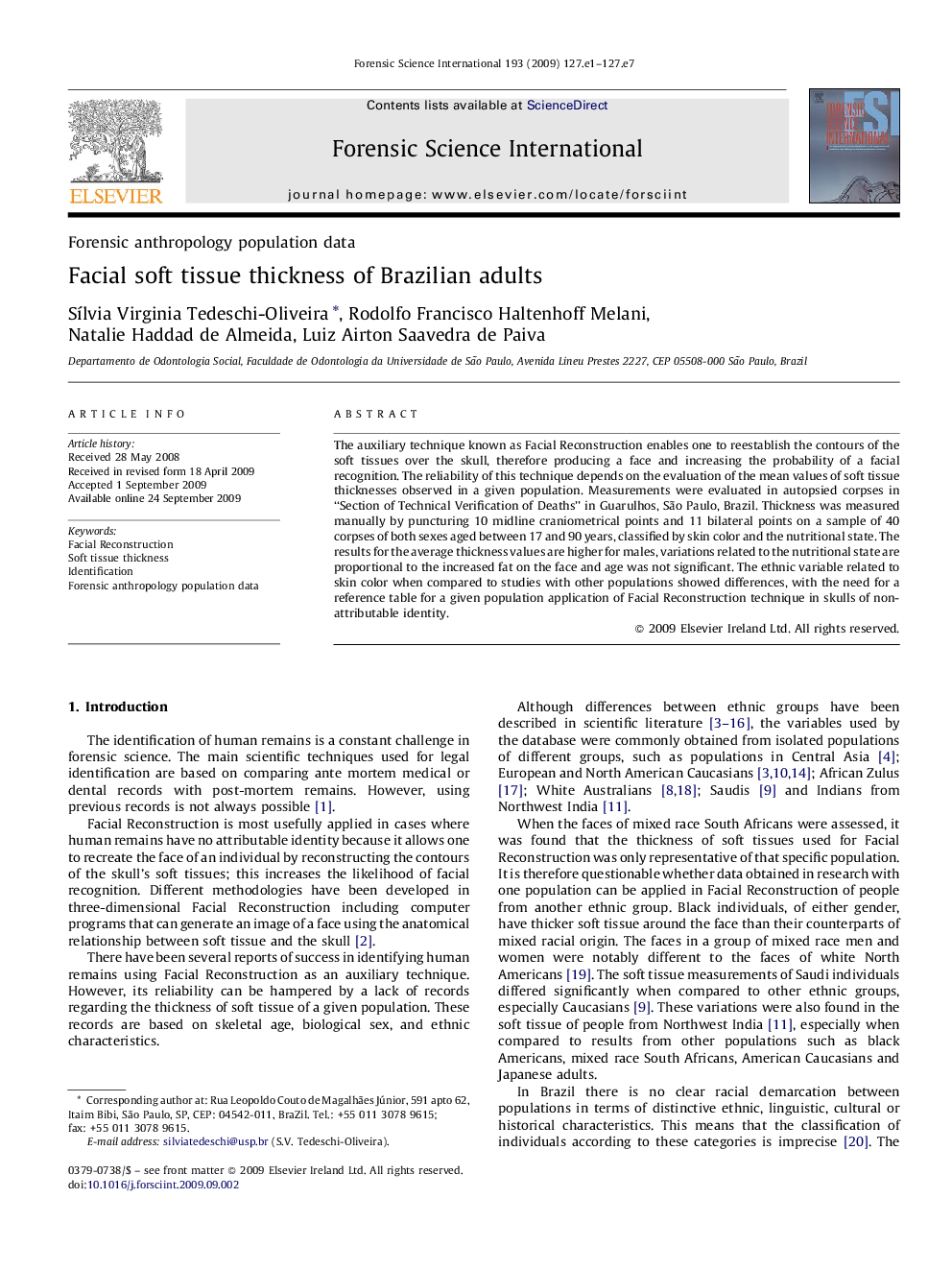| Article ID | Journal | Published Year | Pages | File Type |
|---|---|---|---|---|
| 97319 | Forensic Science International | 2009 | 7 Pages |
Abstract
The auxiliary technique known as Facial Reconstruction enables one to reestablish the contours of the soft tissues over the skull, therefore producing a face and increasing the probability of a facial recognition. The reliability of this technique depends on the evaluation of the mean values of soft tissue thicknesses observed in a given population. Measurements were evaluated in autopsied corpses in “Section of Technical Verification of Deaths” in Guarulhos, São Paulo, Brazil. Thickness was measured manually by puncturing 10 midline craniometrical points and 11 bilateral points on a sample of 40 corpses of both sexes aged between 17 and 90 years, classified by skin color and the nutritional state. The results for the average thickness values are higher for males, variations related to the nutritional state are proportional to the increased fat on the face and age was not significant. The ethnic variable related to skin color when compared to studies with other populations showed differences, with the need for a reference table for a given population application of Facial Reconstruction technique in skulls of non-attributable identity.
Keywords
Related Topics
Physical Sciences and Engineering
Chemistry
Analytical Chemistry
Authors
SÃlvia Virginia Tedeschi-Oliveira, Rodolfo Francisco Haltenhoff Melani, Natalie Haddad de Almeida, Luiz Airton Saavedra de Paiva,
